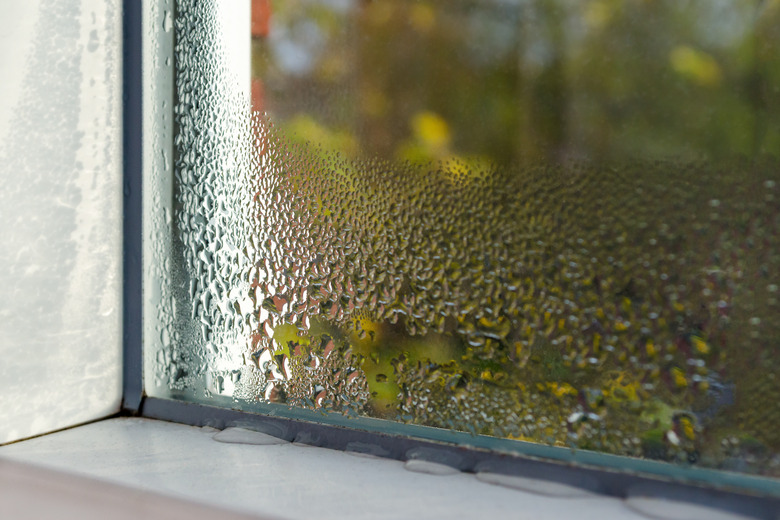How To Determine Relative Humidity From A Wet & Dry Bulb Thermometer
Relative humidity shows how much moisture the air could hold compared to how much it does hold. This percentage differs at various temperatures as warmer air has a greater capacity for holding moisture than cooler air. Determining the relative humidity using two thermometers lets you cheaply find out if your home or area has too much or too little moisture in it. Excess moisture can breed mold while not enough dries out skin. Prevent these problems by using dehumidifiers or vaporizers to manually adjust the environmental humidity.
Step 1
Tape two bulb thermometers side by side onto the piece of cardboard with their tips hanging off the side of the cardboard.
Step 2
Dip the facial tissue (or cloth) into water to soak. Squeeze out the excess liquid.
Step 3
Wrap the damp tissue around the bulb of one of the two thermometers. Do not get the other thermometer wet.
Step 4
Take the temperature from both thermometers in degrees Fahrenheit or degrees Celsius after 10 minutes. The dry thermometer measures air temperature and the tissue-wrapped thermometer determines evaporation temperature.
Step 5
Convert both Fahrenheit readings to degrees Celsius by subtracting 32 from the Fahrenheit temperature and multiplying the result by (5/9). For instance, for a temperature of 50 degrees F: 50 – 32 = 50; 18 x (5/9) = 10 degrees Celsius.
Step 6
Subtract the evaporation temperature in degrees Celsius from the air temperature in degrees Celsius.
Step 7
Look on the left side of a relative humidity chart to find the row for the air temperature (dry thermometer reading) in degrees Celsius.
Step 8
Scan the column headings at the top of the chart to locate the difference between the air temperature and evaporation temperature.
Step 9
Find where the temperature difference column intersects the row with the air temperature and use this number as the relative humidity.
Things Needed
- Two mercury bulb thermometers
- Cardboard
- Tape
- Facial tissue or 3-inch square piece of cotton cloth
- Humidity chart for wet and dry thermometers (see Resources)
References
Cite This Article
MLA
Hessong, Athena. "How To Determine Relative Humidity From A Wet & Dry Bulb Thermometer" sciencing.com, https://www.sciencing.com/determine-wet-dry-bulb-thermometer-5912217/. 13 March 2018.
APA
Hessong, Athena. (2018, March 13). How To Determine Relative Humidity From A Wet & Dry Bulb Thermometer. sciencing.com. Retrieved from https://www.sciencing.com/determine-wet-dry-bulb-thermometer-5912217/
Chicago
Hessong, Athena. How To Determine Relative Humidity From A Wet & Dry Bulb Thermometer last modified March 24, 2022. https://www.sciencing.com/determine-wet-dry-bulb-thermometer-5912217/
